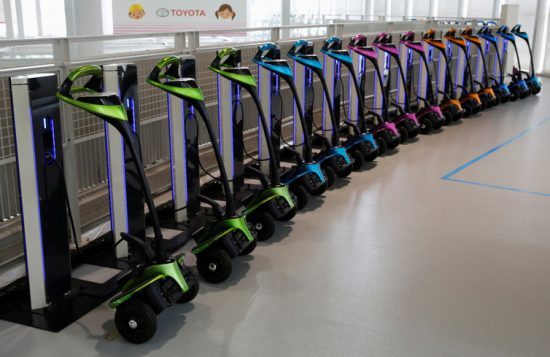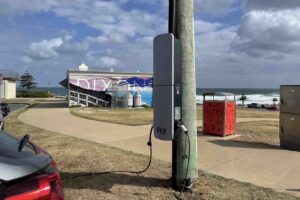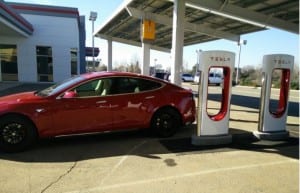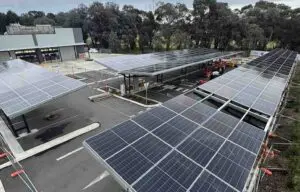A plethora of new and personalised ways of getting around cities are emerging – electric bikes, motorised scooters, electric vehicles, car sharing and re-interpretations of the taxi by Uber.
How might we realise the potential of these transport disruptions? How does the combination of culture, regulation and technology shape sustainable transport futures? The extent to which technologies align with social, political and policy norms is a critical factor in their uptake and success.
Technology is politically, socially and culturally mediated. Its success relies on how it relates to existing lifestyles and aspirations. Technologies need to be accommodated in the ways we want to move around cities. The most amazing technological intervention will quickly atrophy if it is disconnected from daily needs and desires.
Regulatory settings can impede or foster new technologies. We can make space for different ways of moving around – such as cycleways, footpaths and roads. We can prohibit or encourage disruptive forces, as so starkly evident with Uber. We can set tax and other pricing mechanisms, as incentives or disincentives for modes of transport.
Some argue that new technologies are so disruptive because they have no predecessor to show us the way. But examples are emerging that show us where society, regulation and technology have or have not aligned, underpinning their success or failure.
Car sharing – an obedient disruption
Car sharing in Australia’s inner cities has been phenomenally successful. There are an estimated 50,000 car sharers across the country.
The disruptions of car sharing are mild: it draws on technologies and skills shared with other aspects of social life. The concept of sharing is disruptive but easily accommodated; regulation adapted quickly to the subtle shifts required. It is an obedient disruption, and this obedience is one of the pillars of its success.
Car sharing is technologically disruptive as it relies on smart technologies to function. It is booked online, unlocked by a smart card, automatically paid by credit card and invisibly monitored via GPS.
It is socially disruptive. Car sharing relies on people deferring or giving up car ownership. Importantly, it asks us to give up the emotional and cultural attachments we have to cars. Evidence is mounting that millennials are swapping out the car for the phone as a status symbol.
Car sharing does not significantly challenge regulatory frameworks or political interests. It does rely on parking space, though, and local governments have quickly developed car-sharing policies to balance the needs of sustainable transport with access to on-street and off-street parking. While providing dedicated parking space to car-share organisations has been politically controversial, the regulatory supports were easily identified and mobilised.
Car sharing is a case where the lifestyles, values, technologies and regulation are aligned – a sustainability success story.
Personal mobility devices – a disruption in limbo
Personal mobility devices, known as PMDs, are more disruptive and a less successful sustainable transport option thus far in Australia. These are personal, battery-powered or motorised modes of transport designed for an individual to use on footpaths or shared paths. They include Segway, YikeBike or two-wheel motorised “Razor” scooters.

These devices allow the rider to travel short distances quickly without physical effort. Their small size makes them easily transferable between transport. This means they can bridge the “first and last mile” – between home and transit and work.
Despite their popularity, which is visible on city streets, PMDs are unable to be legally ridden on roads, footpaths, shared paths or cycleways in most Australian states. They do not meet vehicle standards and cannot be registered or legally used on roads.
Most of these devices are too dissimilar from bicycles, even electric bikes, to be classed as bicycles. Motorisation and wheels also rule out their classification as a pedestrian.
With the exception of some devices for tourism, PMDs remain in limbo in most Australian states. There was a move in Queensland in 2013 when a policy framework to regulate the use of PMDs was implemented. These regulations specified what a PMD is and how/where it can be used.
PMDs were defined as pedestrians to be used in pedestrian environments. Strict rules applied. Riders must:
- not exceed 12 kilometres per hour;
- be 12 years or over; and
- wear a helmet.
In short, regulatory settings were modified to allow these new forms of technology, though not without debate.
How might these means of moving about the city be accommodated or become part of ordinary transport? For these devices to be used as transport, they need to get people travelling faster than walking without compromising safety.

Driverless cars – are we ready?
The stuff of science fiction 50 years ago, some technological optimists today predict driverless cars will be in our cities within five years. Indeed, autonomous cars are already here. New cars have adaptive cruise control, lane departure warnings, collision avoidance and parking assist.
Robotic vehicles are increasingly common in agriculture and mining. With researchers turning their attention to the realities of life with driverless cars, regulation and social impact are once again emerging as key issues.
A recent assessment by the National Transport Commission of Australia found that 716 provisions from two conventions, 32 acts and 21 regulations need to be addressed before autonomous vehicles become commonplace. Fundamentally, legal and insurance frameworks need to rethink a driver, and who is responsible when there is no driver.
There are also considerable privacy implications of tracking and the ubiquitous sensing and data collection that these vehicles require. While the technology is almost there, our policy frameworks are not quite there.
Research also shows that people are not quite ready for autonomous cars. Car makers are working in more sophisticated ways to ensure that autonomous cars talk to passengers, telling them when they are and are not in control and what is around them.
Businesses, on the other hand, are increasingly ready for autonomous cars, especially through shared transport. In the US, General Motors has invested significantly in ride-sharing business Lyft. General Motors expects autonomous cars to be operating within ten years.
Uber is conducting its own trials of autonomous vehicles. Increasingly, it appears that economic and social conditions are more likely to support driverless buses, at least short term.
Evidence is mounting that our cities, citizens, businesses and policymakers are getting ready for a future where transport technologies that are neither car nor public transport are commonplace. Mismatches remain between technology, social life and regulation, but their alignments, especially around shared transport, are proving successful.
Source: The Conversation. Reproduced with permission.










